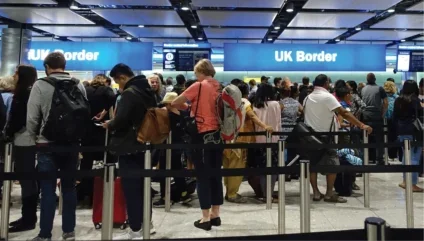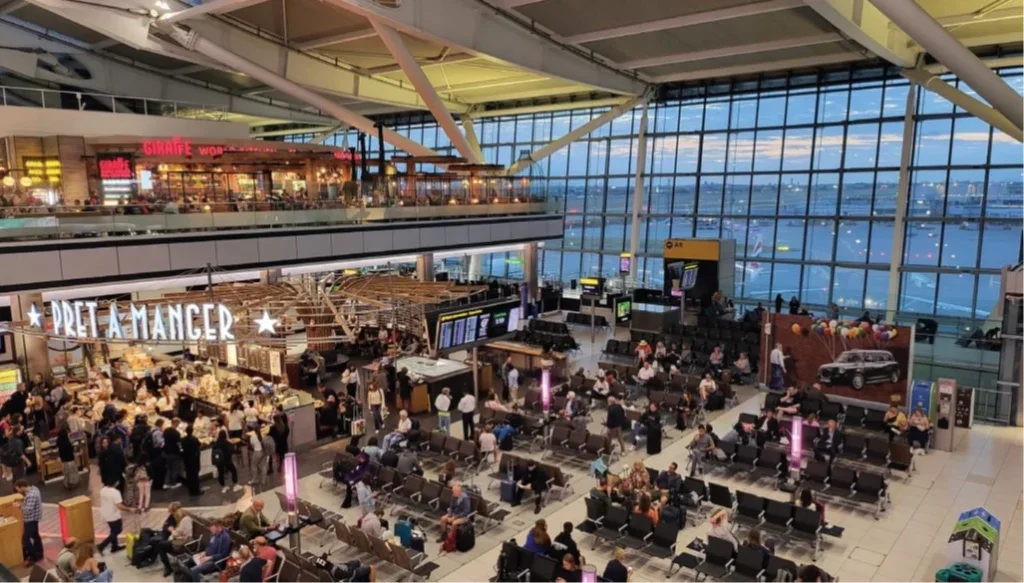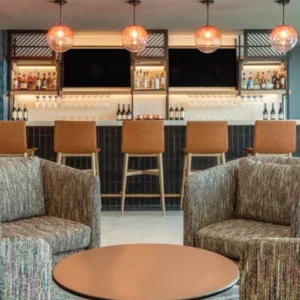
Heathrow is one of the world’s busiest airports, and in 2023 welcomed more than 79.2 million passengers travelling to and from the UK.
But while it has been at the forefront of introducing new technology like biometric checkins to speed up the process of boarding and disembarking flights, the digital experience it offers to customers has not, by the admission of Peter Burns, kept pace with consumer expectations.
Burns, the airport’s director of digital and marketing, has been spearheading a transformation designed to update this experience.
Peter, can you start by telling us a bit about your career to date and your role at Heathrow?
Peter Burns: I’ve been at Heathrow for about five years, and prior to that I worked in a similar digital position for Carnival, the cruise line company that owns P&O and Cunard, and spent several years at Waitrose and the John Lewis Partnership. I started out in digital marketing, but as businesses have matured my role has changed and now encompasses the whole digital experience, including front and back-end systems.
At Heathrow, my role covers digital product management. I have responsibility for data, which is a big thing for us, as well as our marketing and distribution channels. I think the digital side of things appeals to the entrepreneur in me – you can be an entrepreneur within your own organisation because you get given these incredible tools and can use them to innovate. The possibilities are endless.
Heathrow has been undergoing a major digital transformation since you joined the airport. What was the driver for that?
In many respects, we hadn’t kept up with changing passenger – and wider consumer – expectations. As an organisation, we think we’re great at running airports and, in some respects, the technology that drives check-in, but we knew we had to do more from a commercial viewpoint. We knew relatively little about the people coming through the airport and their journey, and we also knew we had a legacy infrastructure problem, which we needed to solve by creating a technology platform that could grow with us. Our vision for Heathrow is to give passengers the best customer service in the world, and we realised we had to change our digital systems to enable us to do that.
Can you talk a bit about the legacy infrastructure challenges you faced?
Because Heathrow is like a city, we have a lot of different services – we have our main website, our rail services, our parking and many others. These had developed separately. Historically, we had 45 different back-end systems and 14 front-end websites, each with its own look and feel and separate login process, and this happened because, as technology builds out over time in a large and complex organisation, you often don’t get any consolidation. Consequently, we ended up with some great systems, but they’d been built in silos, which was leading to a disjointed customer experience.
What was your solution to this, and how did you sell it to other members of the Heathrow executive team? Was it easy to get their buy-in?
We wanted to move to a platform model and create a single digital experience for our customers. If you think about an airport, it’s kind of like a physical platform, in that it brings together airlines, passengers and retailers. Our plan was to create a digital version of that because we know that makes it easier for us to integrate into the broader transport system.
Right from the start we have worked closely with the tech team to develop this. We used some agile processes, which were quite new to the business, but that collaboration was key and we had the support from our CIO, which was vital. Our directors and senior leaders understood the importance of this project because we were able to demonstrate how it would support the delivery of the kind of customer service that we couldn’t offer before.
“Our vision for Heathrow is to give passengers the best customer service in the world, and we realised we had to change our digital systems to enable us to do that.”
What technology have you used to build your new platform?
We chose Salesforce for the platform because of its cloud capability. As a big and complex organisation we have many different requirements across the business, and having the Salesforce service cloud, commerce cloud and data cloud all together in one place has made a big difference.
We’ve also built a data lake on Microsoft Azure. We’re lucky at Heathrow because we have access to a lot of different types of high-quality consumer data, so our tech team spent a lot of time putting that into a central repository, and we’ve been able to connect that into Salesforce. We’re not quite there in terms of getting all the benefits, but we’re starting to have a richer view of the customer journey. We’re also working with Capgemini as our development agency as we look to integrate more AI into our systems. Acxiom is our data agency, and we work with a couple of others to help us plug in different things.

What has been the biggest challenge on your digital transformation journey?
The migration has taken some time, but I’d say that once you’ve chosen the right systems and partners, the technology is the easy part. The difficult bit is how you integrate that into your existing operating model. I describe the technology we use as being like a Ferrari, but at the moment we can only drive it at 10mph. So, we need to change how we work, and maybe be a bit more agile. That could involve working more closely with our partners so that we can get value out of the platform and switch on capabilities more quickly, as well as training and upskilling our existing teams so they can make the most out of this technology. We have the foundations in place – now we need to reorganise and rethink what we’re doing internally.
“We’re using artificial intelligence in our contact centres, with 80% of our contacts coming through a digital channel, like a chatbot, or WhatsApp and social media.”
When it comes to upskilling your staff, what role do you see in the building of low-code and no-code applications? Is this something you would like to see your digital team doing more of?
We have done some low coding within the team, predominantly around optimisation and personalisation. I can see us doing a bit more of that as we mature as an organisation, but I think the agency model works well for us generally. In some ways, it’s enabled us to move more quickly.
What benefits have you seen from your new platform? And what do you plan to do next?
We’re creating a more personalised customer journey. We recently added beacons to help with mapping around the airport, and have introduced live queue times so you can see how long it’s going to take to get through security. It’s early days, but I can see a world where you ask your home assistant, “What time should I leave for the airport?” and it will be able to map out your journey for you and remove that anxiety for customers. We’ve got elements of that already in place.
We’re also in the process of adding things like bag tagging, so you won’t necessarily need an Apple Airtag on your luggage – instead, you’ll be able to track it through the airport system itself. We’re also looking at re-platforming our customer rewards system to make it more useful and relevant.
We’re using AI in our contact centres, too, with 80% of our contacts coming through a digital channel, like a chatbot, or WhatsApp and social media. We’re currently testing two new use cases in the contact centre for Salesforce’s Einstein AI. One of these is around automated responses, whether that’s in live chat or email. We’re also using it as part of the closure process, and looking at how it can generate knowledge articles that can feed back into our system and help enhance what we offer to customers.






